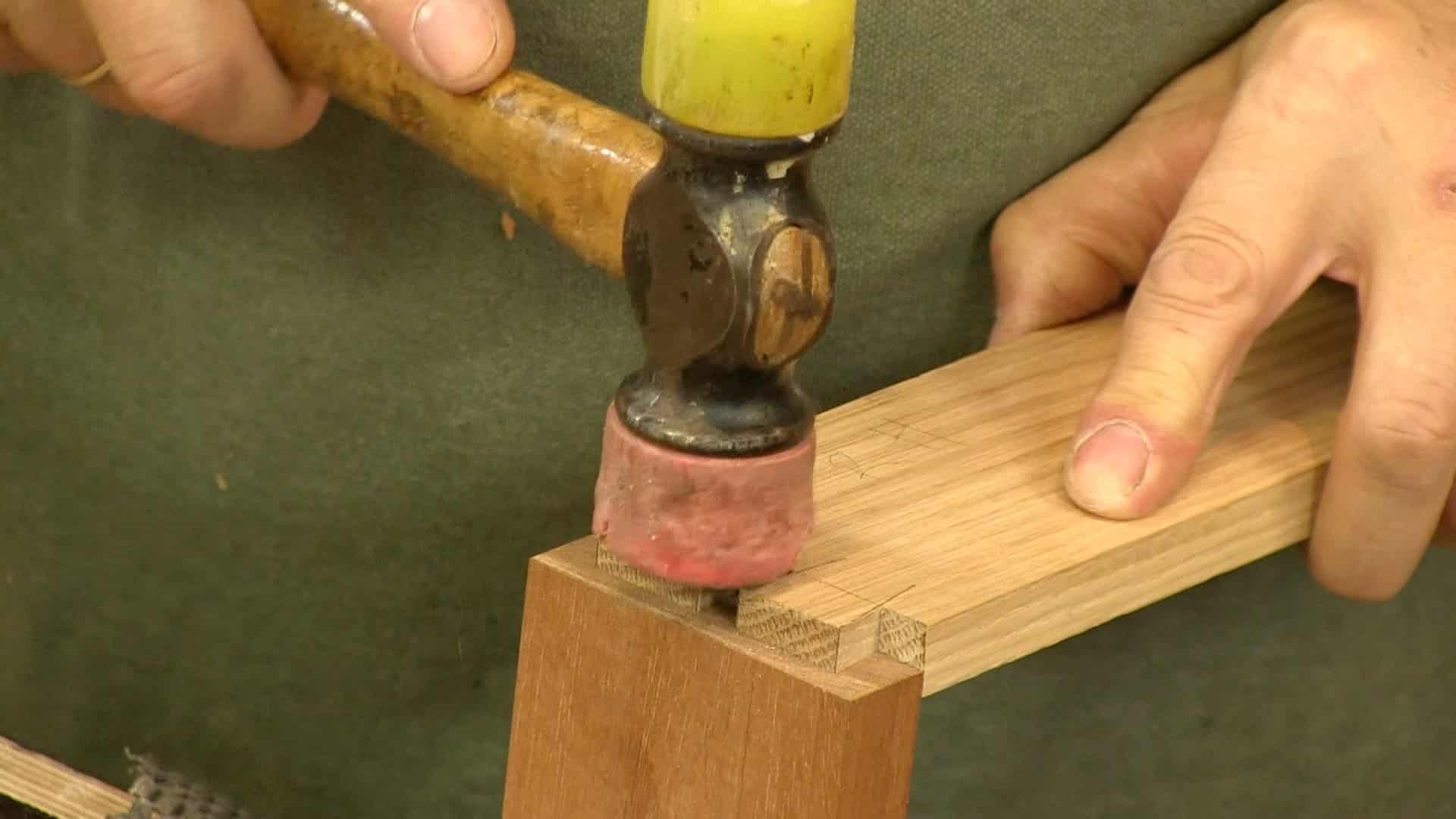Tool Chest: Episode 14
Posted 17 October 2013
This is an episode in a paid series. Want to watch it? You just need to sign up as a paid member, and you can enjoy this video and many other videos we think you will love.
In this episode, Paul demonstrates cutting the half-blind dovetail joints for the front corners of the drawer. This technique is one that is nearly universal in making drawers and hides the joint when viewing the drawer from the front.


Nice work guys, thanks for this one 😉
I thought it was my turn to say that for this episode Ken 😀
Oops sorry Jon 😉
Tell you what; you can be my official proxy.
😉
Stopped at 19:30. First time I’ve ever had a problem. Guess I’ll check back later.
fantasic lesson after a week of putting flat pack (swedish) furniture together for a friend it is a joy to see real wood and hand cut joints thanks for keeping the art alive
as usual, very subtle and very refined
Must. Have. That. Dovetail. Template
I want mine, too 😉
–Óscar
Agreed! Would love to have one to remind me where my learning came from.
What a beautiful join! Thanks for showing the fine details. That very shallow recess is a fine technique for insuring no inside gaps. Wonderful!
Thanks also for the extra work of straightening out the episode sequence. I appreciate not only the woodworking techniques, but also the behind the scenes work of the technical crew. Thanks all.
Great episode! Thanks.
The passion that this man puts into his work is really, and wonderfully, contagious. He guides my hands, and my mind, to make the work as perfectly as possible with a simplicity an precission that I never could imagine was possible to get.
My most sincere grateful, Mr. Sellers.
Thanks Joseph by this weekend gift.
–Óscar
Great presentation! So proud of the integrity…..inspiries me to dedicate myself to consistently striving for perfection. This very adeptly illustrates the value of patience. Mr Sellers, you are an excellent teacher and I am happy to sit at your feet. Thank you.
That’s go to be the best video done to date. For me, this episode reinforced that you can’t be shown things too many times. I learnt so much when Paul was showing how to plane the drawer front to size despite it being stuff that he has said before about not having to push down. It explains why I sometimes end up with a slight belly in the middle of my edges. Can’t wait to get out into the workshop and try things out now.
I also would like to add my thanks to the unseen crew who work so hard for us all. It can’t be easy having to react to sudden movement like that and film a close up and keep things framed and in focus. Its a tribute to them that each video feels like its just the viewer and Paul.
Great video Paul & team
I have never made a half Lap Dovetail but am now inspired to have a go.
“Master Classes” is such an apt name
Thanks
Excellent ! ! great new technique and great production as always!
Thanks
Always excellent!!
Thanks, thanks, thanks
Oh this is great, the more I watch these the more I learn. I am anxious to build some drawers now using the “Housing Dado with Mortice and Tenon, that has to be a very strong combination.
No complains here but curious, are there runners for the drawers or did I miss that ? I also like the idea of the extra 2” or so to hold drawer in from falling / tilting.
Steve
The runners for the drawers are put in in the next episode.
Phil
Forgive my presumption, but I think the part who shows how to put the runners for the drawers not appear.
Oscar, Paul fits the drawer runners in episode 16, at about the one hour mark
Uh! Thanks @ken. I’ve seen It. I think he skipped the order of things at some point, and I missed it. In any case excellent project. Thank you again.
–Óscar
Very methodical, precise, and patient .
Excellent!
It’s amusing. Some of the relatively new American techniques are probably very old proper woodworking form. Two that I have seen Paul use, but in an alternative way, are the so called Stanley “140 trick” and the “ruler trick”, for putting on a back bevel on a plane cutter.
Mr Sellers, thank you for another great lesson. Your approach is so rewarding compared to many others out there who are trying to only impress and not teach. Your video takes the time and shows very close up what real bench work is like.
Striving for the accuracy, is so well illustrated.
I thank you for your attention to the details we students need to see.
Paul, love the tool chest.
Would you please tell me what kind of oil you use in your Tomato Can?
Thank you Moochie
Glad you’re enjoying the project.
It’s 3-in-one oil: https://paulsellers.com/2011/10/recycling-4oz-bean-or-tomato-tins/
Kind regards, Phil
I am wondering why you would use a backer-board to cut square tails instead of cutting both drawer sides together, using the same knife-wall method?
Paul, when cutting tails first, I’ve learned you can cut both sides together.
This not only serves the function of the backer board, but it is more efficient use of sawing. Wondering if you advocate this, and if not, why not?
Also, do you agree a low angle plane cuts end grain more efficiently? I’m my experience a LA block plane is my go to for this, but I noticed you commented otherwise. Just wondering why you wouldn’t think LA wouldn’t be more effective on end grain. Thanks.
Is it my imagination or is the half lap dovetail easier to make than a regular dovetail.